From derelict
smallholding to agility venue...
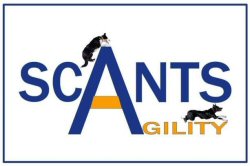 Jane Drinnan-Payne
started doing agility in 2006 when she and her husband Mark moved to Norfolk.
The long-term plan was to set up their own care business. Agility swiftly became a big part of their lives - Mark's by default. It was at times
terrifying, often hilarious and mostly amazing. They worked hard and ended up
with two small homes and made some massive positive changes to the people living
there. And then in 2018 Mark suddenly got ill and died, and Jane had to decide what
to do with her life. Jane Drinnan-Payne
started doing agility in 2006 when she and her husband Mark moved to Norfolk.
The long-term plan was to set up their own care business. Agility swiftly became a big part of their lives - Mark's by default. It was at times
terrifying, often hilarious and mostly amazing. They worked hard and ended up
with two small homes and made some massive positive changes to the people living
there. And then in 2018 Mark suddenly got ill and died, and Jane had to decide what
to do with her life.
I am a learning disability nurse by trade,
and I spent almost all of my career working with children and adults with
learning disabilities and behaviours which challenge. It was a responsible and
demanding job, but I always found time to do agility training even if it was
only 15 minutes out in the garden at 9pm when I got home from work.
Scants Corner Farm dates back to the
1700s. It had been derelict for at least 10 years when we bought it and, prior
to that, it had been a small working pig farm. While the builders
renovated inside the house, we tackled the waist high brambles outside to uncover
3.5 acres (approx) of paddock and garden. We completed the renovations in 2015
and moved in, and in 2016 we built the first outdoor school.
When I tragically lost Mark, I realised what a
responsibility the care homes had become. My responsibilities to the people who
lived with us, their families and the staff team had become a huge weight
especially without Mark. He had been the reason we had set up the care homes.
They had been his idea and I felt conflicted about walking away from this thing
we had created together.
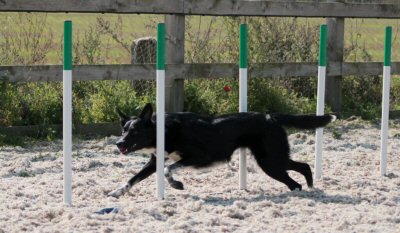 Taking
a chance Taking
a chance
I needed to think about a backup plan that
would give me something to do and something that would give me an income.
I had always been a massive agility fan and
doing something agility related made sense in terms of being able to work from
home and spend time with my dogs, but trying to find an 'in' that would make a
viable business in an already busy market was the issue.
On occasion I had hired out my outdoor sand
school to a friend of mine who is an agility trainer, and a couple of friends had approached me for 1-2-1 agility lessons.
To be honest, while
I was still managing the care homes, I never thought of making my hobby into
a business.
Using the capital from the sale of the care homes, however, I could see
there was an opportunity to expand the venue side of agility. I began to wonder
about the viability of a bespoke, indoor agility sand school. As far as I was
aware, there weren't many of these facilities around.
The cost would be massive. As well as the
new building, there was also the building of another outdoor school so that hire
and lessons could continue during the build.
With the sale of the company going through in
April 2020, I decided to take a chance and the funds in a steel building to make an
indoor agility arena for hire. As a dedicated indoor dog agility space, it would keep year-round
interest and open up the possibility of more events as well as give me a weatherproof, agility training space for my dogs.
As it all happened
during Covid and the lockdown, I agreed to continue
working for the buyers to help with the transition while they weren't able to
get to the homes themselves. My contract ended in June 2020, and I was
finally able to put my plans into motion.
 Stage
1 Stage
1
All this coincided with the ending of the first
lockdown. Obviously, I had completed Covid Risk Assessments and measures to stop
the spread of infection while trying to keep the business going. Individual and
small group hire of the outdoor school resumed with me adjusting courses for
customers before their arrival and ensuring that, between customers, I was
available to bleach down the equipment and the gate before the next hire. I had sanitiser in place both inside and outside the school.
In a perfect world, it
would be great to trust to that process but bleaching everything down seemed
safer, albeit time consuming.
Guest trainer workshop numbers were cut also
to adhere to the government rule of six. This impacted upon the people organising these
workshops who had to ensure that the height changes were done as quickly as possible for participants,
while ensuring that as few people as possible were touching the equipment. I
always
had bleach spray on hand in case anyone accidentally touched the equipment
which happens quite a lot on contacts.
Another issue was use of the toilet. I have
an indoor toilet which I let people use, but that only became a cross
infection hot spot. I considered hiring a toilet, but that would only move the
risk of cross infection from the house to the hired toilet. Unless I knew exactly when someone was using the toilet and could clean
it down afterwards, it would still be a risk. In the end, people were asked not to use the toilet and,
on
the occasional emergency, the person ended up with a 'bleach escort' going with them.
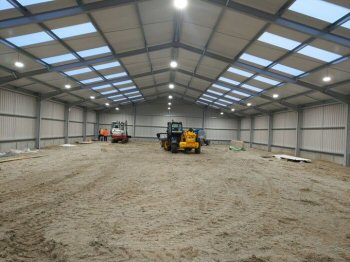 Stage
2 Stage
2
In October, the construction guys started on
the steel building. I had copies of their procedures, and I worked closely with the
company manager to ensure we had appropriate social distancing in place with
barriers dividing construction guys working on the indoor building, while people
continued to use the outdoor school.
This was the same time that the tier
system was introduced. Everyone was scanning nervously on a daily basis to see whether
Norfolk would move into Tier 3. Again it would've had massive implications for
the business. I had invested a huge amount of money in a new outdoor school and
the steel building as well as new agility equipment and had been hoping to start recouping some of that
investment. However, we quickly moved from Tier back into national lockdown in
November 2020. Scants Agility was closed again.
In October I
advertised a series of mock competitions, training events run under
competition standards, while adhering to the rue of six. The aim was to enable people to
practice timed course walks and run their dogs under pressure, or run NFC and
get some practice in. I'd suggested running a clear round league for
participants and bought rosettes for clear round achieved.
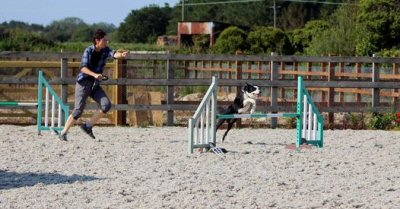 October and November's competitions didn't
happen. We managed the December one with Covid compliance show in place. The day went
really well and seemed very well received so I planned more. October and November's competitions didn't
happen. We managed the December one with Covid compliance show in place. The day went
really well and seemed very well received so I planned more.
Then on the 6th January 2021, we
went into what we hoped would be the final lockdown and Scants Farm closed again. To be honest, this seemed
like the longest time. I'd been lucky enough to be able to work managing the
care homes during the first
lockdown. I know how lucky I was to have
training facilities here at home so I had something to do every day.
Stage 3
In 2020, the replacement outdoor school right next to the new indoor school was
finished with a large car park immediately in front of them and
toilet facilities. I was ready to advertise Scants Farm as a host venue, offering indoor and
outdoor hire facilities.
I also started to schedule teaching evenings (lectures etc.) on
various aspects of agility which will be held in the indoor
school as soon as Covid restrictions are lifted.
For longer workshops, I offer hot and cold
drinks and snacks and for agility camps, I do a nice lunch as part of the
service. I now have
planning permission for up to six caravans/tents/ to holiday in the paddocks,
and
I've decided to go ahead with three more shows. My risk assessments have been updated. I've got my bleach spray to
hand and I'm very much looking forward to seeing my agility clients and friends
again.
Thanks to Covid-19, I had no real idea if what I've invested in is going to be successful. Most people
have been incredibly supportive and a lot of people have helped me share the
venue and spread the word. We will see what occurs as we come out of lockdown.
For more information, go Scants Agility FB
page or http://www.scantsagility.co.uk
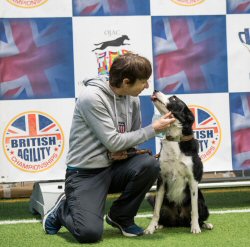 About
the author... About
the author...
Jane Drinnan-Payne and her husband
Mark moved to Norfolk in 2006. With both of them having more settled jobs and
hours, they decided to get a dog. They ended up with two adult rescue collies.
Agility training followed and quickly became a big part of their life.
In 2008, they got a puppy called Zach who loved agility, if
possible, even more than Jane did. They went to as many workshops and shows as possible to do.
Getting to Grade 7 with Zach was a proud moment.
Jane and Mark opted for another
rescue dog. In 2011, they got D, the collie that wouldn't. He didn't play and
certainly didn't do agility. He taught them so much about teaching failure,
training success and how to look at agility tasks from the dog's point of view.
Cafall is the thinker. He's just turned seven, and Jane has worked hard on getting
him to enjoy agility, not just look at it as his job. Clay is two. She's from
Italy like Cafall. She's not related to Zach but reminds Jane so much of him in
her attitude. She loves agility. Going out to train is possibly her favourite
thing.
First published 19th April 2021
|